Moondrop Starfield
disclaimer: I received the Moondrop Starfield from Hifigo in exchange for this review. If you have an interest in the Starfield, you can follow Moondrop on facebook, or shop Hifigo or their Aliexpress store. Those who have followed me for any length of time here will know I have owned and the Kanas, Kanas pro (KP), and KXXS among others. I have no affiliation with Moondrop or Hifigo other than customer and have no financial interest in either outfit. I will readily concede that I have enjoyed Moondrop’s previous models, and do have a bit of expectation bias as a result.
Unboxing / Packaging:
The Starfield comes in a tall, narrow lift top box with a slip-cover that forgoes the typical anime drawings and instead has a silhouette gazing up at the stars on the front, and an exploded diagram of the iem on the reverse. The box itself is an interesting shade of blue with Moondrop in English and Chinese in silver on the cover. Once inside, the word “Starfield” is printed in the same silver on the surround that holds the foams. Internally, the space is split horizontally with the earpieces in a surround at top, and the case at bottom. The kit includes 6 sets of tips, the cable, warranty cards, case, replacement grill/filters, and a set of tweezers to help install them. At the price point it is a fairly complete offering although I do wish the case were a bit larger as it is pretty tight.
Build/Fit:
Unlike other models, the materials used for the earpieces are not listed on Moondrop’s adverts. They appear to be the same zinc/aluminum alloy used on previous models based on a weight comparison with the KXXS and KP, but instead of the high polish finish of those models, the Starfield elects to use a flecked metallic paint. Seams are not as well mated as the KXXS or KP and again, this shows some of where the cost cutting between this model and its predecessors is taking place. The painted finish is very attractive and even with good color matching between parts. The Starfield logo is displayed in gold on the left faceplate while the name starfield is printed on the right. Shells are the standard two part design with an outer face-plate and the inner body that includes the nozzle. Nozzles exit the lower/front edge of the shell with a slight forward rake and lack a lip for tip retention. The inner shells have two vents, one immediately behind the nozzles and a second in line with the bi-pin connector on the inner face of the shell.
When being worn, the tips insert fairly deeply giving the Starfield reasonably good isolation, while the body sits mostly in the ear with little protrusion to the exterior. Weight is on the heavy side due to the construction, but due partially to small size and partially to tip up wear, weight is quite manageable. For me, comfort was good and long wear resulted in little fatigue.
Internals:
Moondrop’s line has long been dominated by 10mm dynamic drivers and the starfield is no exception. It houses a single 10mm dynamic driver, this time listed as a dual cavity driver with carbon nanotube diaphragm. Verbiage is a bit different from the driver used in the KP and KXXS so this may be the next evolution of that driver, or it may be another branch of the same tree. The driver does share a lot with previous models sizes, signatures, and impedances are all basically the same, but the starfield does sport a bit higher sensitivity than previous models. Nominal impedance is listed as 32Ω with a sensitivity of 122 dB/mW @ 1kHz. this compared to 110 for the KXXs and KP. This does make the Starfield a bit easier to drive than either of the previous models. I did find the Starfield paired well with phones and tablets and lower powered sources like the Cayin N3. It does scale well with better sources but most of the gains are qualitative rather than quantitative as it simply doesn’t need an amp to do its best work.
Cable:
The cable provided starts with a moulded 90º 3.5mm jack in translucent clear housing followed by a Litz braided 4N oxygen free copper cable a blue casing that matches the earpieces well. The splitter is coin shaped in black with the Moondrop name in Chinese on the front and a plain reverse. No strain relief exists above or below the splitter, nor is there a chin-slider provided. The wires exit the splitter as 2 wire twists and continue northward to preformed hooks with .78mm bi-pin connectors in translucent housings that match the jack. My one complaint on this is that the L/R markings on the cable are hard to see as they are moulded into the housing and dissappear into the background. As with previous models (KP, KXXS), the bi-pin connector fits into a recess in the shell and has potential to limit the use of after-market cables as the size and style of the bi-pin housing will have to remain nearly the same as the provided cable in order to fit properly. The cable while reasonable, is the main place where a step to cut costs is seen compared to the KXXS.
Sound:
Bass:
Sub-bass extension matches previous models with roll-off only evident in the 30Hz range. Bass is boosted through most of its range with a peak that centers between 60 and 80Hz, and a subtle drop above that through the rest of the range. Sub-bass has good rumble when called upon, while mid-bass is punchy and tight enough to not feel thickened but still lends some warmth to the overall sound. The mid-bass does have a small amount of bleed, but not enough to mask the lower mids. The driver is slightly faster on attack than decay as well which also contributes some to the warmth of the mid-bass. Textures in the bass are good, but not quite at the level of the KXXs as it seems a bit tighter comparatively.
Mids:
Mids are well delivered with good clarity and detail and the bass bleed contributes just enough warmth to give the mids a very natural weight without feeling artificially pumped up or thin. Tonality is also very good with strings sounding quite natural and vocals showing excellent timbre. Acoustic guitar sounds natural and may be a touch better voiced than its electric counterpart, but electric growl is still quite good. Vocals due cut through the mix well and have good detail and tone as well. Here the Starfield is very much a KXXs as the mids parallel each other between the two models.
Treble:
Here again, those familiar with the KXXs will recognize the signature. An early push gives the lower treble roughly the same energy as the bass bump, then it fades back some to keep from getting harsh. Extension is good with roll-off only apparent to my ear above about 13kHz. There is a valley around 9kHz that prevents the Starfield from sounding harsh like many that peak in that same range. Clarity is quite good and snare rattle is believable as are cymbals without the normal metallic click so common to treble aggressive tunings. Air and sparkle are good but are obviously somewhat limited by the choice of tuning.
Soundstage / Imaging:
Soundstage is well above average for the price and has both good width and depth with some sense of height as well. Seating the orchestra puts everything in the proper place with little overlap or tendency to put one in front/behind rather than adjacent to each other. Instrument separation and layering are both very good and quite frankly better than expected at the price. Imaging is very good as well with spatial cues easily tracked around the stage although here I do think it is a small step behind the KXXs.
Comparisons:
Moondrop KXXs
I’ve covered a good bit of this already as these two are basically fraternal twins. The KXXs uses a diamond like carbon coated driver while the Starfield uses a Carbon Nanotube coating but both share the same base driver underneath the coating, both share the same housing size and shape, and both share about 95% of the same tuning. The Starfield is slightly smoother and more efficient so a bit easier to drive with low powered sources, while the KXXs has a bit more edge but requires an amp to really get the most out of it. Honestly, you don’t need both as they are more similar than not, but if you don’t already own the KXXs, you should grab the Starfield and save yourself nearly $100.
Tin Hifi T4
This is another very similar offering both in price and driver although shape is a bit different. Fit is comfortable for both so not likely to be the deciding factor between the two, but tuning will. The T4 is a bit more linear and has less bass boost than the Starfield, while the starfield sounds a bit less bright than the T4. This may be more due to the lack of bass boost to balance the treble boost of the T4 than to the Starfield offering less boost in the upper-mids/lower-treble, but regardless of cause, the T4 comes away sounding a bit brighter overall. The treble shy have always struggled a bit with Tin Hifi tunings and will likely prefer the Starfield as a result. Both have roughly the same detail level so these two are more separated by personal tastes than technical merit.
WG T-One
Yet another similar model is size, shape, driver, and price range. The Starfield is a bit prettier, while the T-One settles for a subdued rippled black shell, but the T-One is a bit more rounded off and slightly thinner so may be an easier fit for small ears. I’d also give the T-One points for an improved cable compared to that provided with the Starfield. Had the T-One been released before the Starfield, Diamond and T4, it would have been an easy recommendation as it has a very similar tuning to the Starfield and Diamond and sits somewhere between the Diamond and T4 in treble. Those who have the T-One don’t need the others and vice versa, but it doesn’t do enough to separate itself to be a clear call and to me it lacks just a bit of detail and clarity of the Starfield. This one is a tough call, but the Starfield brings a little more to the table
KBear Diamond
Here we have more in common in driver and sound signature than in shell as the diamond is built like a tank comparatively and is a bit larger in the ear. Cable on the diamond is also improved over what comes with the Starfield by a good margin. Sound wise the two are more similar than not with the diamond being slightly smoother and the starfield slightly more extended in the treble. I do think soundstage separates the two a bit as the Starfield manages a more 3 dimensional stage with better proportion when compared to the diamond. Again, what separates these two is as much personal preference as technical merit and many will like the smoothness of the diamond where I prefer the treble detail and stage of the Starfield. Both are quite good, the Starfield is just slightly better.
Thoughts / Conclusion:
The Starfield is an easy recommendation. It offers 95% or better of the KXXs for rougly half the price point and competes on at least an even footing with the best models at the price point (and to my mind wins more than its share of the time). Some will even argue it looks better than the KXXs to boot. The cable is a bit of a let down for sure, but with what you get for the price, replacing the cable still does little to negate the value proposition of the Starfield. To me, the Starfield is a great generalist in-ear. It may not be perfect for every genre, but it is good at all of them. It has enough extension at both ends to feel open, enough treble to feel detailed, and enough restraint to feel comfortable without a lot of fatigue. It is very early in the year to declare a best of 2020, but I have no doubt that come December the Starfield will still be prominent in that discussion, its just that good.
-
Bass - 7.5/107.5/10
-
Mids - 7.5/107.5/10
-
Treble - 7.5/107.5/10
-
Soundstage - 8/108/10
-
Imaging - 7.5/107.5/10
Summary
Pros: Good looking, great sound quality for cost, solid build
Cons: Cable is a step back from previous models, Paint durability is questionable


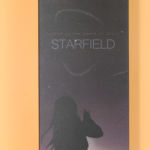
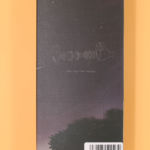
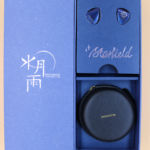
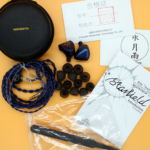
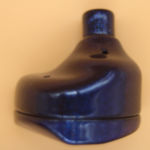
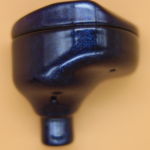
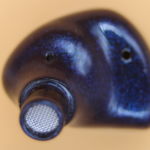
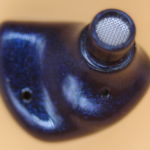
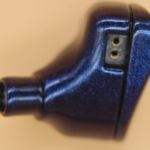
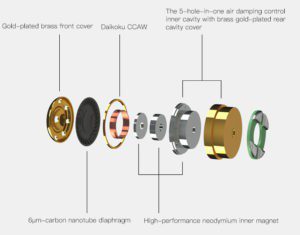
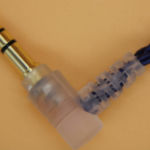
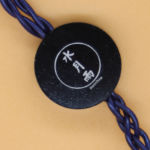
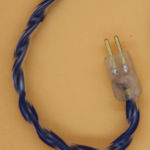


Which is better for sound quality alone.T4 or Starfield?I do have a t4 and i like it more than kanas pro in eveey way which leaves my kpe only for watching movies.
For me, the Starfield wins as it has less of a treble elevation comparatively and slightly more textured bass.
How does it compare with the Bqeyz Spring 1?
I am trying to make a decision between these two.
The Starfield is a bit more relaxed and polite where the Spring1 has a bit more detail and treble energy.